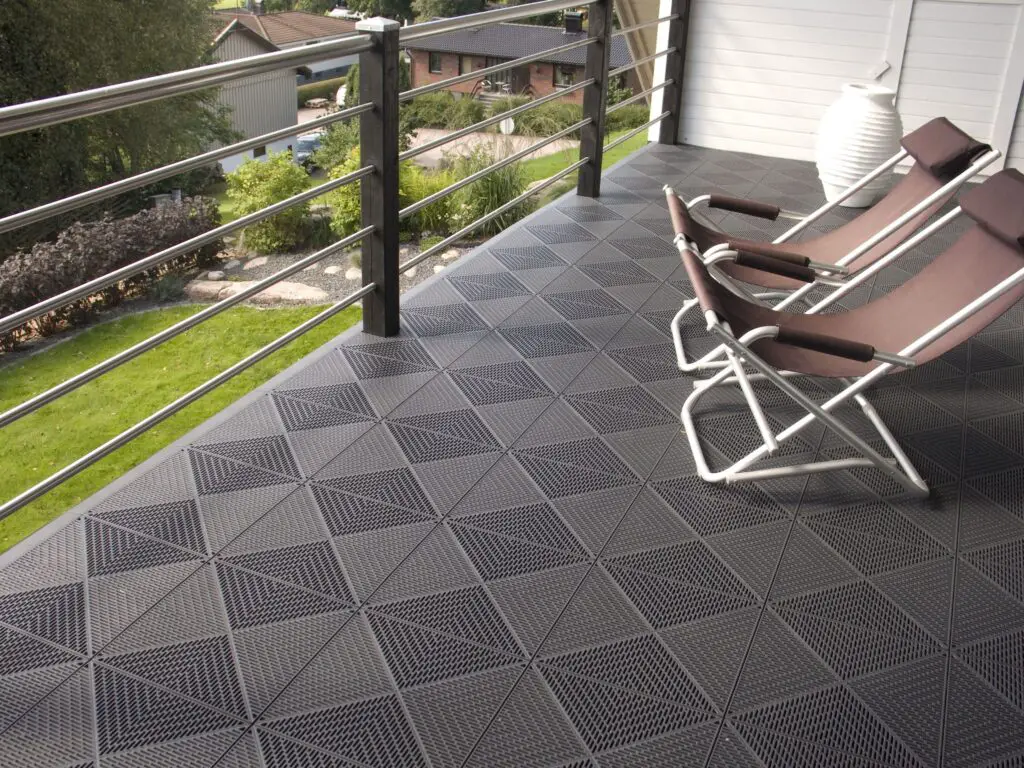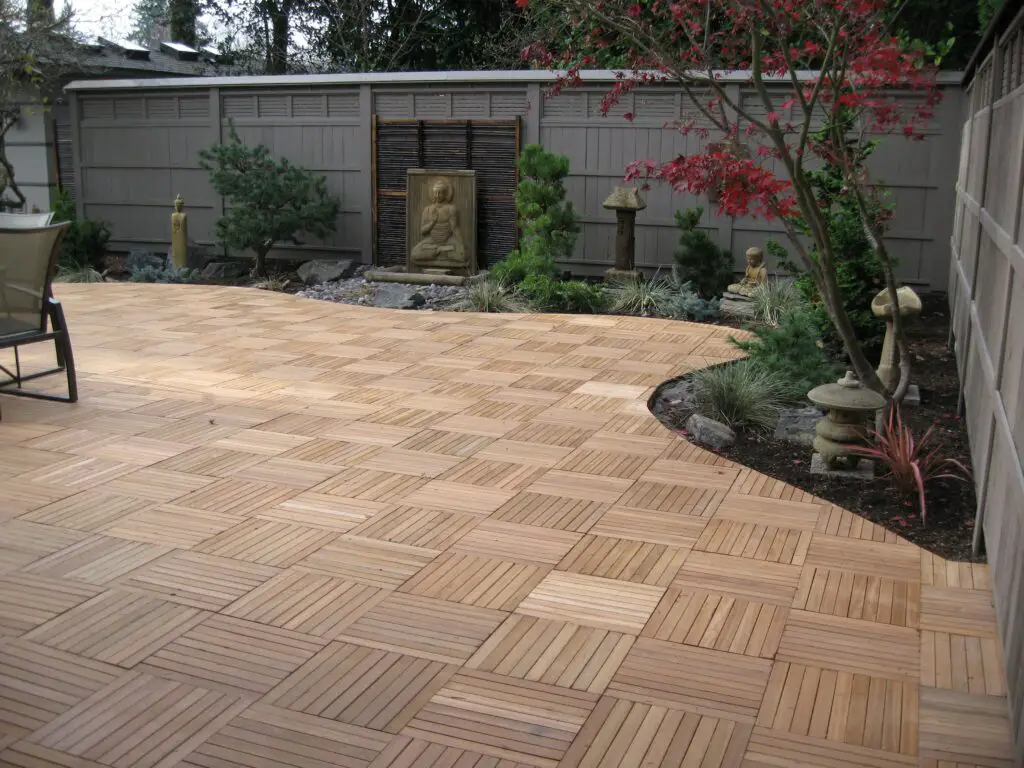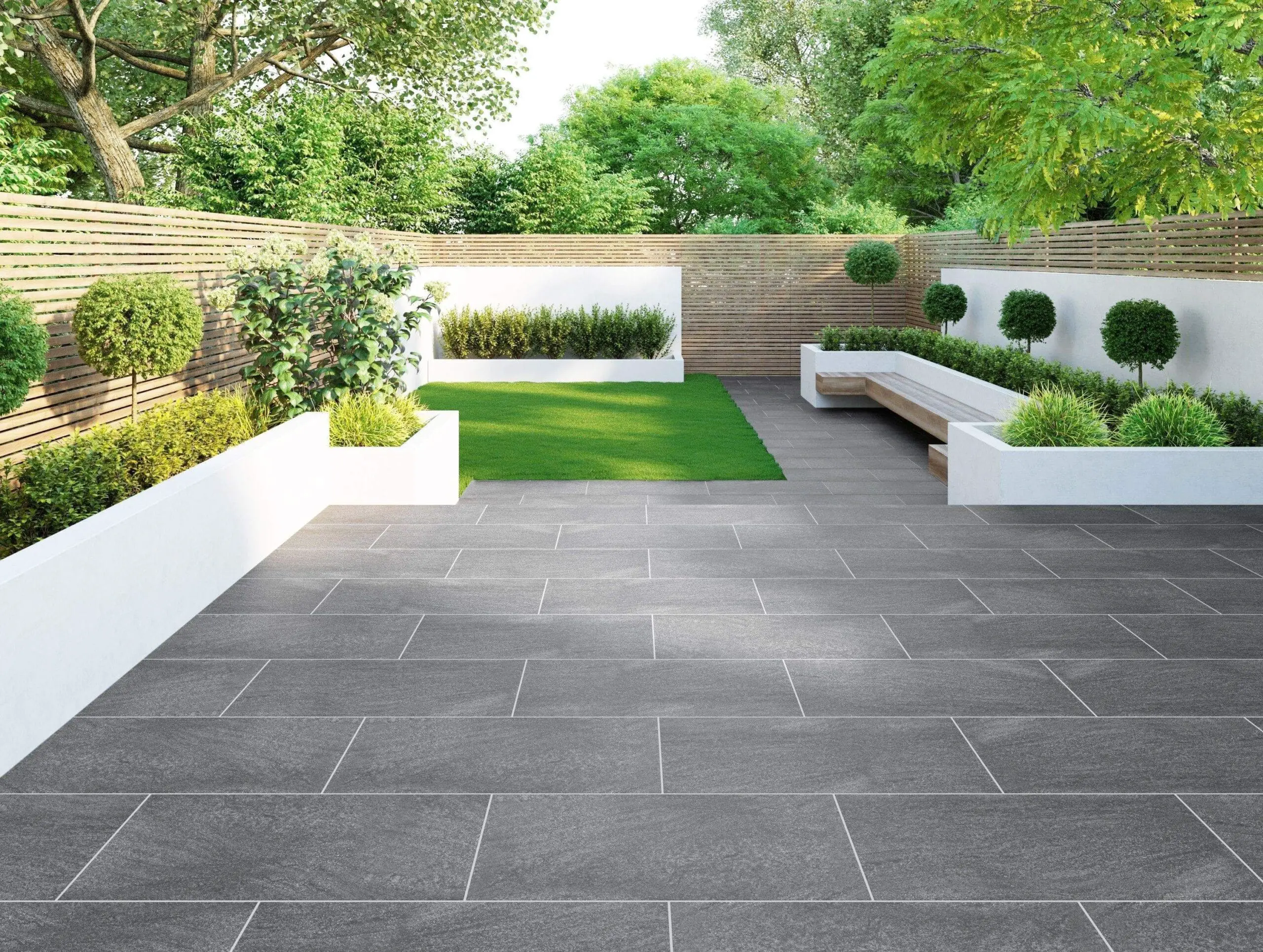What Are The Best Tiles For A Patio
Introduction
What Are The Best Tiles For A Patio: When it comes to designing a patio, choosing the right tiles is crucial. The tiles you select will not only determine the overall aesthetic of your outdoor space but also play a significant role in its functionality and durability. With so many options available in the market, it can be overwhelming to decide which tiles are best suited for your patio. In this article, we will explore some of the best tile options for a patio, taking into consideration factors such as style, durability, and maintenance.
Porcelain tiles are a popular choice for patios due to their versatility and durability. These tiles are made from a dense clay that is fired at high temperatures, resulting in a hard and non-porous surface. Porcelain tiles come in a wide range of colors, patterns, and textures, allowing you to create a patio that matches your personal style. Additionally, they are resistant to stains, scratches, and fading, making them an excellent choice for outdoor use. Porcelain tiles are also easy to clean and maintain, requiring only regular sweeping and occasional mopping.
Natural stone tiles are another great option for a patio heater, offering a timeless and elegant look. Popular choices include granite, slate, limestone, and travertine. Each type of natural stone has its own unique characteristics, such as color variations and natural veining, adding a touch of natural beauty to your outdoor space. Natural stone tiles are known for their durability and ability to withstand harsh weather conditions. However, they do require regular sealing to protect against stains and moisture absorption.

What is the best tile for a patio?
When it comes to choosing the best tile for a patio, there are several factors to consider. The right tile can enhance the overall look and feel of your patio, while also providing durability and functionality. With so many options available, it can be overwhelming to make a decision. However, by considering your specific needs and preferences, you can find the perfect tile for your patio.
One important factor to consider is the material of the tile. There are various materials to choose from, including ceramic, porcelain, natural stone, and concrete. Each material has its own unique characteristics and benefits. Ceramic tiles are a popular choice for patios due to their affordability and wide range of design options. Porcelain tiles are known for their durability and resistance to moisture, making them a great choice for outdoor spaces. Natural stone tiles, such as slate or travertine, offer a natural and rustic look, while concrete tiles provide a modern and sleek appearance.
Another factor to consider is the size and shape of the tile. Larger tiles can create a seamless and spacious look, while smaller tiles can add texture and visual interest. The shape of the tile can also impact the overall design of your patio. Rectangular tiles can create a clean and contemporary look, while square tiles can provide a more traditional and classic feel. It’s important to consider the size and shape of your patio when choosing the tile, as well as the overall aesthetic you want to achieve.
What outdoor tile won’t crack?
When it comes to choosing outdoor tiles, durability is a key factor to consider. One of the most common concerns with outdoor tiles is the possibility of cracking. Cracked tiles not only look unsightly but can also pose a safety hazard. Therefore, it is important to select outdoor tiles that are specifically designed to withstand the elements and resist cracking.
Porcelain tiles are an excellent choice for outdoor areas as they are known for their exceptional durability. Porcelain is a type of ceramic tile that is fired at a higher temperature, making it denser and less porous than regular ceramic tiles. This makes porcelain tiles highly resistant to cracking, even in harsh weather conditions. Additionally, porcelain tiles are also resistant to stains, fading, and moisture, making them an ideal choice for outdoor spaces.
Natural stone tiles such as granite, slate, and travertine are also popular options for outdoor areas. These tiles are formed from natural materials and are known for their strength and durability. Natural stone tiles are less likely to crack compared to ceramic tiles, especially when properly installed and maintained. However, it is important to note that certain types of natural stone, such as marble, may be more prone to cracking and may require additional care.
Concrete tiles are another great choice for outdoor areas. It Concrete is a strong and durable material that can withstand heavy foot traffic and extreme weather conditions. Concrete tiles are available in a variety of finishes and can be customized to suit your design preferences. They are also resistant to cracking and require minimal maintenance, making them a practical choice for outdoor spaces.
What kind of tile is not slippery when wet?
When it comes to choosing tiles for areas that are prone to getting wet, such as bathrooms, kitchens, or outdoor spaces, it is important to consider their slip resistance. Slippery tiles can pose a safety hazard, especially when they are wet. However, there are certain types of tiles that are specifically designed to be non-slip, providing a secure and stable surface even when wet.
Porcelain tiles are one of the most popular choices for non-slip flooring. These tiles are made from a dense and durable material that is highly resistant to water absorption. Porcelain tiles are often textured or have a slightly rough surface, which helps to increase their slip resistance. They are available in a wide range of colors, patterns, and finishes, making them suitable for various design styles.
Ceramic tiles are another option for non-slip flooring. Like porcelain tiles, ceramic tiles are made from a clay mixture that is fired at high temperatures. This process creates a hard and dense tile that is resistant to water and stains. Ceramic tiles can also be textured or have a matte finish to enhance their slip resistance. They are available in a variety of sizes, shapes, and colors, allowing for endless design possibilities.
Natural stone tiles such as granite, slate, or travertine can also be a good choice for non-slip flooring. These tiles are naturally slip-resistant due to their textured surfaces. However, it is important to note that natural stone tiles may require regular sealing to maintain their slip resistance and prevent staining. Additionally, they may be more expensive compared to porcelain or ceramic tiles.
Are porcelain tiles slippery for a patio?
Porcelain tiles are a popular choice for patios due to their durability and aesthetic appeal. However, one concern that many homeowners have is whether porcelain tiles are slippery when used for outdoor spaces. The answer to this question depends on several factors, including the type of porcelain tile and the surface texture.
Glazed porcelain tiles are protected and less slippery by liquid glass. Textured porcelain tiles are safer for outdoor use because they have a rougher surface that provides better traction.
It’s crucial to consider location and climate while picking patio porcelain tiles. Textured porcelain tiles reduce slips on patios exposed to rain or other moisture. Choose a textured or glazed porcelain tile for safety if the patio is in a high-traffic location or if elderly or young family members are more prone to accidents.
Another consideration is porcelain tile upkeep. Polished porcelain tiles may need more frequent cleaning to avoid slipping. Polished porcelain tiles can be safer to walk on with regular cleaning and non-slip coatings.
What is the best thickness for outdoor tiles?
When picking outdoor tiles, the width of the tiles is something you should think about. Outdoor tiles can be different thicknesses based on what they are used for and what kind of tile is being used. To make sure the tiles last a long time and stay stable outside, it is important to choose the right thickness.
There are a few things that affect how thick outdoor tiles should be:
For different types of outdoor tiles, the width needs to be a certain way. As an example, porcelain tiles tend to be stronger and last longer than ceramic tiles. Natural stone tiles, like granite or slate, may also have guidelines for how thick they should be. Talking to the tile maker or a professional is the best way to find out what thickness is recommended for the tile you want to buy.
The best width will also depend on what the outdoor tiles will be used for. For places that get a lot of use, like driveways or walkways, it’s best to use tiles that are thicker so they can handle the weight and pressure of cars and people walking on them. Thinner tiles might be better for places like patios and pool decks that don’t get used as much.
Outdoor tiles are subject to a wide range of weather conditions, such as high and low temperatures, water, and freeze-thaw cycles. You should choose tiles that are thick enough to stand up to these situations. It is more likely that thicker tiles will not crack or break when the temperature changes or when they absorb water.
Substrate and installation method
The thickness of the outdoor tiles should also be considered in relation to the substrate and installation method. Thicker tiles may require a stronger and more stable substrate to support their weight. Additionally, the installation method, such as mortar or adhesive, may have specific thickness requirements.
To choose patio tiles that are both attractive and functional, consider several things. First, tile durability is crucial. Outdoor tiles that resist cracking, fading, and staining are essential for patios due to weather and foot traffic.
Another consideration is tile slip resistance. Wet patios can be slippery, so choose tiles with a textured surface or high slip resistance rating. The patio size and layout should also determine tile size and pattern. Larger tiles produce a continuous, spacious effect, while smaller tiles allow for more complex designs.
Finally, the tile design and color should match the patio’s aesthetic and surroundings. Choose natural stone, porcelain, or ceramic tiles that are attractive and weatherproof.
What factors should be considered when choosing tiles for a patio?
When choosing tiles for a patio, several factors should be taken into consideration to ensure the best choice for both aesthetics and functionality. Firstly, it is important to consider the durability of the tiles. Since patios are exposed to various weather conditions, including rain, sunlight, and temperature changes, it is crucial to select tiles that can withstand these elements without cracking or fading.
Another factor to consider is the slip resistance of the tiles. Patios can become slippery when wet, so it is essential to choose tiles that have a textured surface or a high slip resistance rating to prevent accidents. Additionally, the maintenance requirements of the tiles should be considered. Some tiles may require regular sealing or cleaning to maintain their appearance and longevity.
What are the most durable tile options for outdoor use?
When it comes to durability, certain tile options are better suited for outdoor use. Porcelain and ceramic tiles are popular choices due to their high resistance to moisture, temperature changes, and fading. These tiles are manufactured using advanced technology, making them extremely durable and long-lasting.
Natural stone tiles, such as granite or slate, are also highly durable options for outdoor use. They are known for their strength and ability to withstand harsh weather conditions. However, it is important to note that natural stone tiles may require regular sealing to maintain their durability and prevent staining.
Are there specific types of tiles that are better suited for different climates?
When choosing tiles for a patio, it is important to consider the specific climate in which the patio will be located. Different types of tiles have varying levels of resistance to extreme temperatures, moisture, and other weather conditions. For hot and dry climates, it is recommended to choose tiles that are heat-resistant and have a low water absorption rate. Porcelain tiles are a great option as they are known for their durability and ability to withstand high temperatures. They are also less likely to crack or fade in intense sunlight.
In contrast, for colder climates where freezing temperatures and snow are common, it is crucial to select tiles that can withstand freeze-thaw cycles. Frost-resistant tiles, such as natural stone or certain types of ceramic tiles, are designed to expand and contract without cracking when exposed to freezing temperatures. These tiles are also typically slip-resistant, which is important for safety in icy conditions.
What are the recommended tile sizes and patterns for a patio?
When choosing tiles for a patio, it is important to consider the recommended tile sizes and patterns that will best suit your outdoor space. The size of the tiles can greatly impact the overall look and functionality of the patio. Generally, larger tiles are recommended for patios as they can create a more seamless and spacious appearance. They also require fewer grout lines, which can make maintenance easier.
As for tile patterns, there are various options to choose from depending on your personal preference and the style of your patio. One popular pattern is the straight lay, where tiles are laid in a simple grid pattern. This pattern is versatile and works well with both modern and traditional patio designs. Another option is the herringbone pattern, which adds a touch of elegance and visual interest to the patio. It involves laying the tiles at a 45-degree angle, creating a zigzag effect.
Can you provide examples of tile materials that offer both aesthetic appeal and resistance to weathering?
When choosing tile materials for a patio, it is important to consider both aesthetic appeal and resistance to weathering. One example of a tile material that offers both of these qualities is porcelain. Porcelain tiles are known for their durability and ability to withstand harsh weather conditions. They are also available in a wide range of colors, patterns, and textures, making them a versatile choice for any patio design. Additionally, porcelain tiles are resistant to fading, staining, and scratching, ensuring that they will maintain their aesthetic appeal over time.
Another example of a tile material that combines aesthetic appeal and resistance to weathering is natural stone. Natural stone tiles, such as granite or slate, offer a unique and timeless look to any patio. These tiles are highly durable and can withstand extreme temperatures, making them suitable for various climates. Natural stone tiles also come in a variety of colors and textures, allowing homeowners to create a personalized and visually appealing patio space. However, it is important to note that natural stone tiles may require regular sealing and maintenance to preserve their beauty and protect them from weathering.

Conclusion
After conducting extensive research and analysis, it is clear that there are several factors to consider when choosing the best tiles for a patio. The type of tile, its durability, maintenance requirements, and aesthetic appeal all play a crucial role in determining the ideal choice for your outdoor space. By carefully considering these factors and weighing the pros and cons of each option, you can make an informed decision that will enhance the beauty and functionality of your patio.
One of the most popular choices for patio tiles is porcelain. Porcelain tiles are known for their durability and resistance to moisture, making them an excellent option for outdoor use. They are also available in a wide range of colors, patterns, and textures, allowing you to create a patio that suits your personal style. Additionally, porcelain tiles are relatively low maintenance, requiring only regular cleaning to keep them looking their best.
Another option to consider is natural stone tiles, such as slate or travertine. These tiles offer a unique and timeless look that can add elegance to any patio. Natural stone tiles are also highly durable and can withstand the elements, making them a long-lasting choice. However, it is important to note that natural stone tiles may require more maintenance than other options, as they may need to be sealed periodically to protect against stains and damage.








